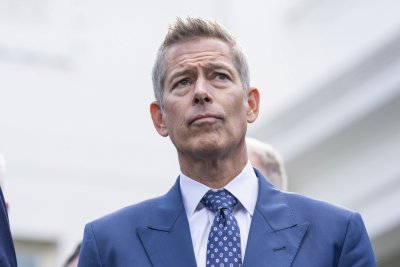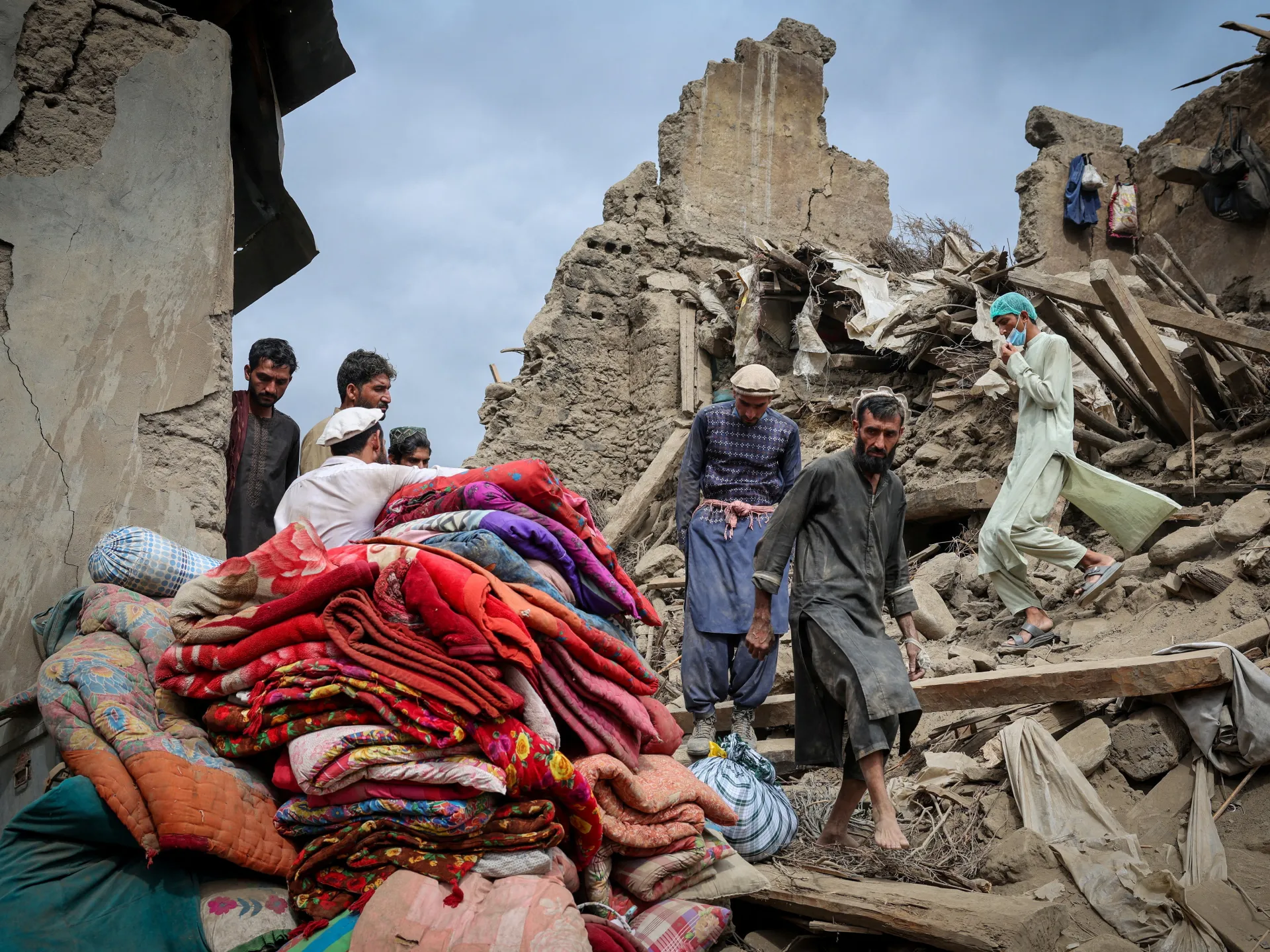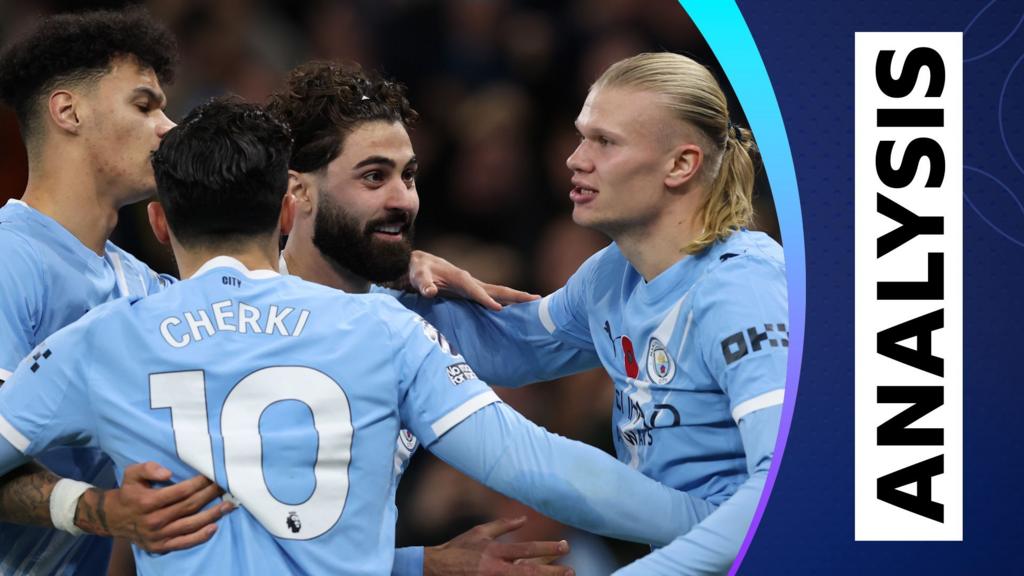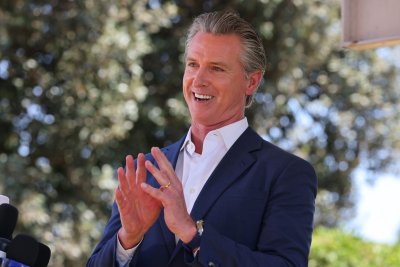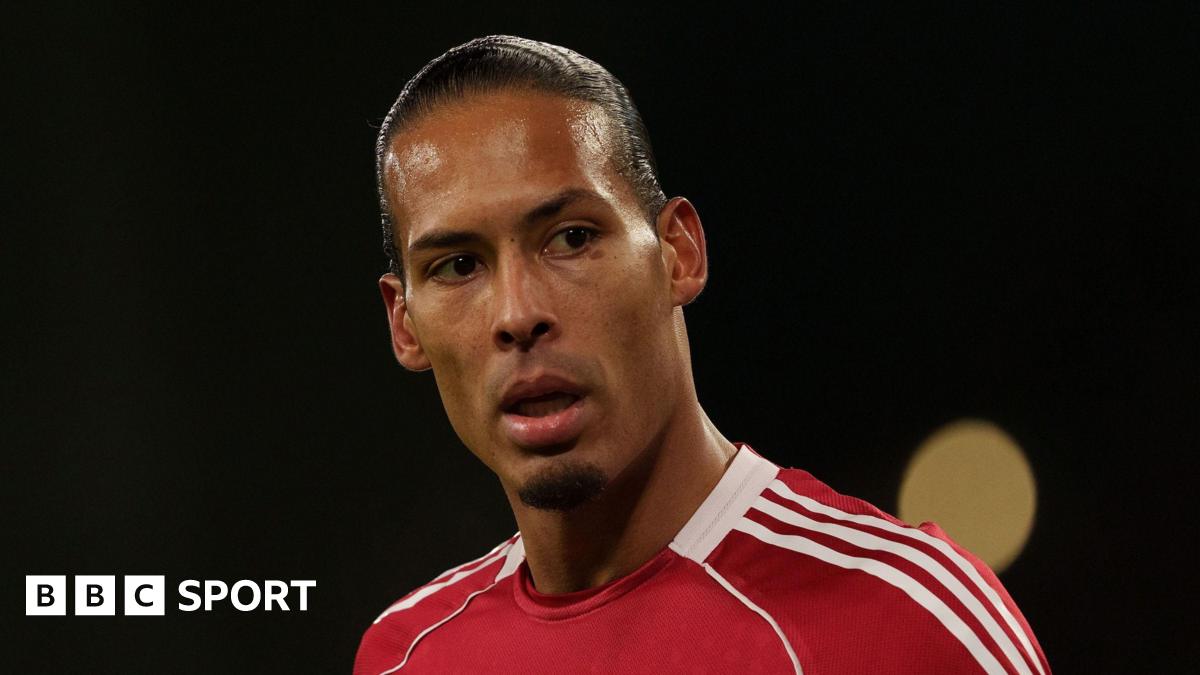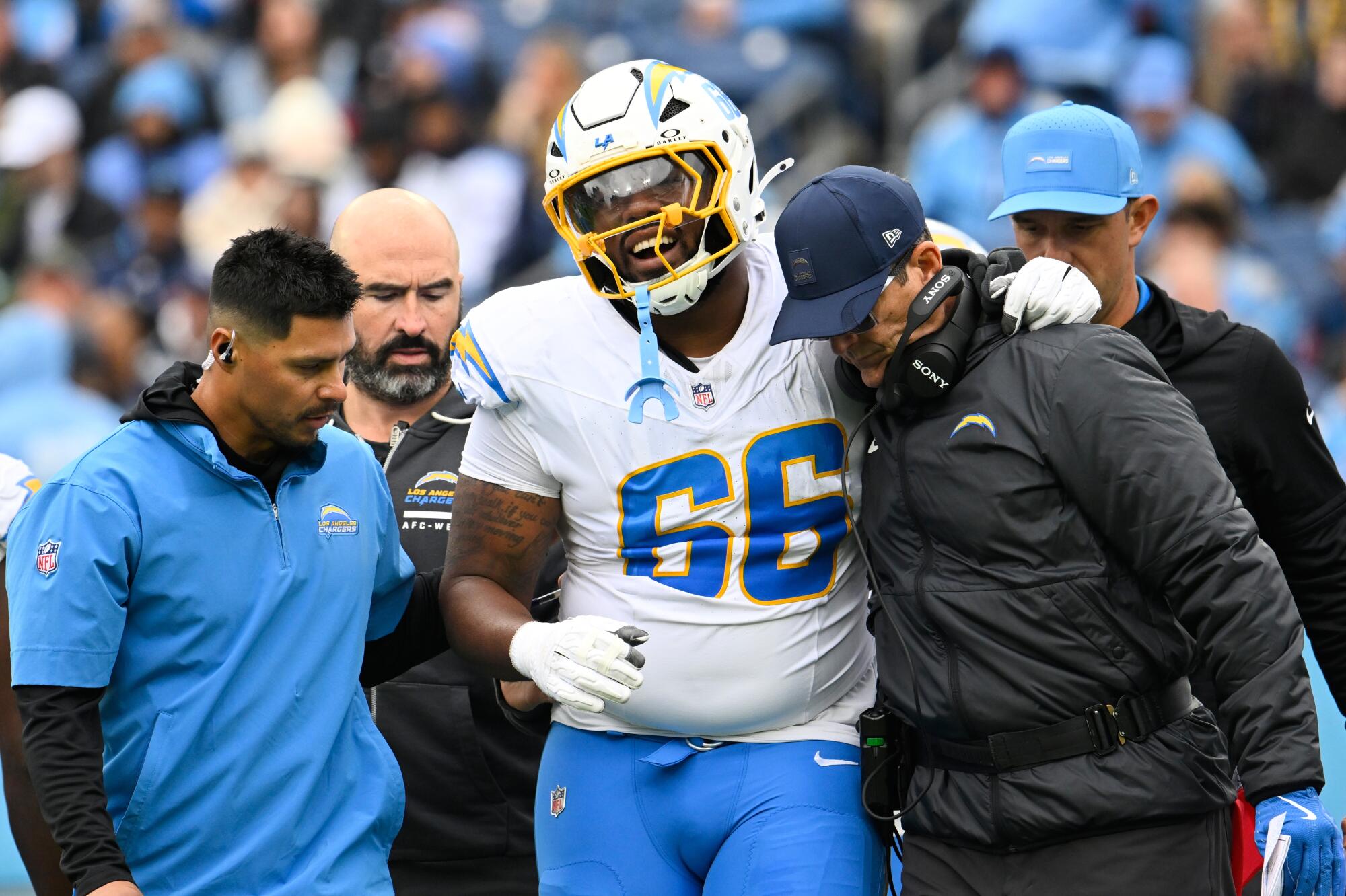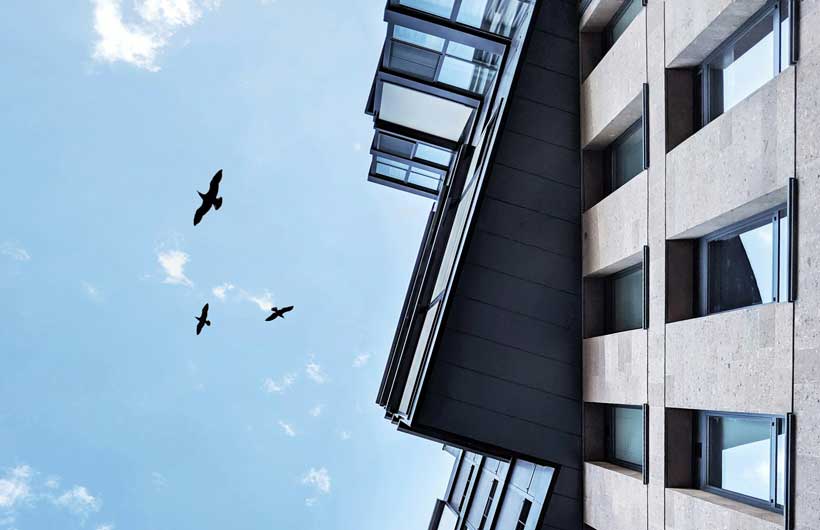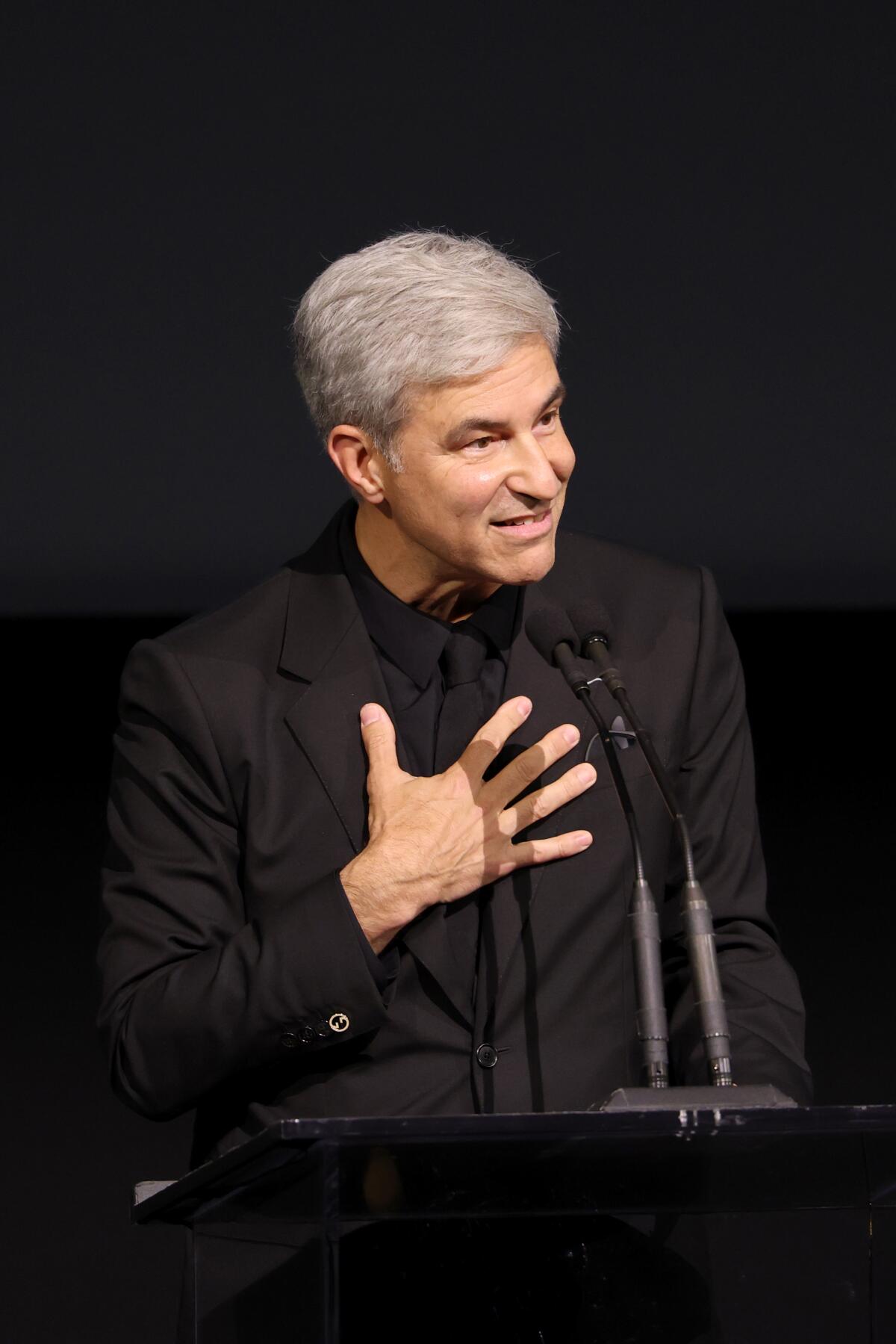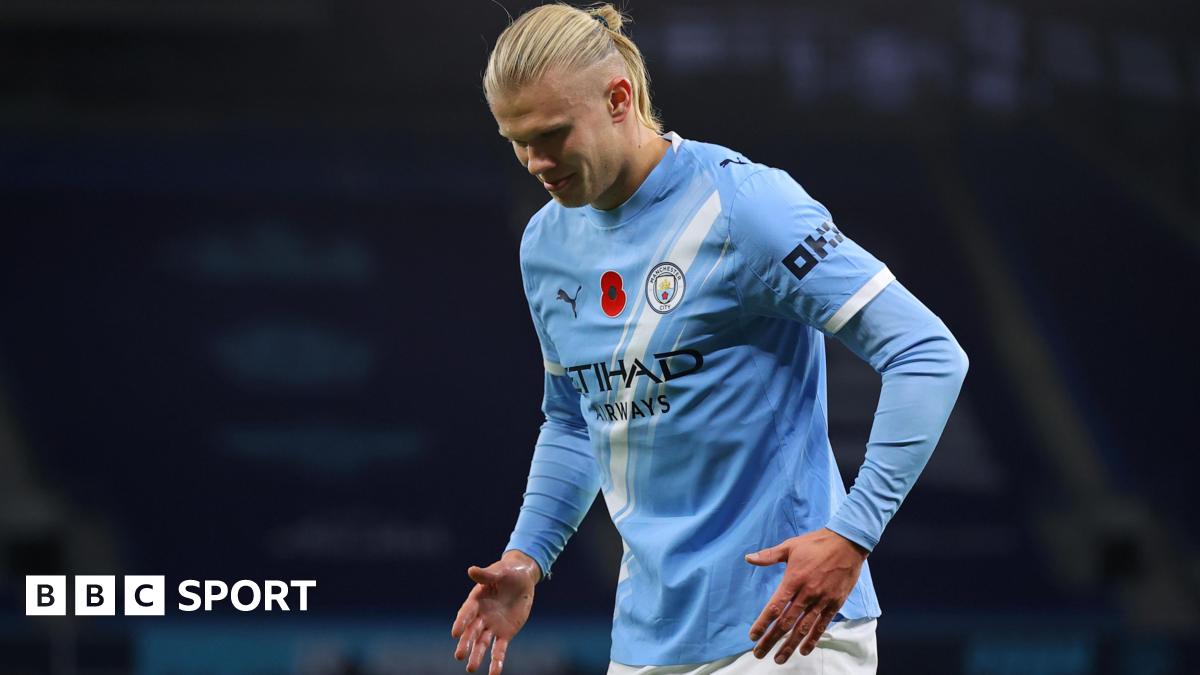Why winless Wolves' problems go beyond sacked manager Periera
Former Manchester United midfielder Michael Carrick and former England goalkeeper react to Wolverhampton Wanderer’s sacking of Vitor Periera on Match of the Day.
Source link
Major airport closures and flight delays amid government shutdown

Nov. 2 (UPI) — Transportation Secretary Sean Duffy said Sunday that the government shutdown, now in its sixth week, would continue to cause flight delays, cancellations and closures amid air traffic control staffing shortages across the country.
“We will delay, we will cancel any kind of flights across the national airspace to make sure people are safe,” Duffy warned during an appearance on ABC’s “This Week.”
Duffy ‘s comments came during a ground stop at Newark Liberty International Airport Sunday, which he said could spread to airports nationwide the longer the shutdown dragged on.
As few as 20 flights per hour were arriving at Newark late Sunday afternoon, local media reported. Delays averaged about two hours Sunday, but some flights were more than three hours late.
“There is a level of risk that gets injected into the system when we have a controller that’s doing two jobs instead of one,” he continued.
Nearly half of all major air traffic control centers are already facing staffing shortages across the country, which prompted a flurry of airport closures, ground stops or long flight delays, according to the Federal Aviation Administration.
The FAA’s real time website shows Boston’s Logan Airport and Harry Reid International Airport in Las Vegas closed Sunday, ground tops at Chicago’s O’Hare, and major ground delays at LAX in Los Angeles and the San Francisco International Airport.
Duffy warned during his Sunday interview that the situation could deteriorate still further as the shutdown continues.
“If the government doesn’t open in the next week or two, we’ll look back as these were the good old days, not the bad days,” he cautioned.
He said the administration is considering “pulling in whatever dollars we can” when asked whether there are other funding sources to pay the costs associated with air traffic control facilities and employees.
Federal law requires air traffic controllers and Transportation Security Administration, along with some other government employees, to work without pay during the duration of the shutdown.
“They have to make a decision,” Duffy said. “Do I go to work and not get a paycheck and not put food on the table, or do I drive for Uber or DoorDash or wait tables?”
Nearly 13,000 air traffic controllers are working with no compensation amid the shutdown. Washington lawmakers are at an impasse of a GOP-led budget bill, which has failed a Senate vote a dozen times.
Democrats are holding out for an extension of Biden-era premium subsidies that make health insurance more affordable on the federal marketplace.
Russia-Ukraine war: List of key events, day 1,348 | Russia-Ukraine war News
Here are the key events from day 1,348 of Russia’s war on Ukraine.
Published On 3 Nov 2025
Here is how things stand on Monday, November 3, 2025:
Fighting
- Russia fired a wave of drones and missiles at Ukraine overnight on Sunday, killing at least 15 people, including two children, the Kyiv Independent reported.
- The attacks cut electricity to nearly 60,000 residents in the southern front-line region of Zaporizhia, Ukrainian authorities said.
- Ukrainian forces launched a drone attack on one of Russia’s main Black Sea oil ports, Tuapse, causing a fire and damaging at least two foreign vessels there, according to local officials.
- The overnight attack on Sunday forced the temporary closure of dozens of Russian airports, chiefly in the country’s south and west, for safety reasons, Russia’s aviation watchdog Rosaviatsiya said on Telegram.

Weapons
- United States President Donald Trump said that he is not considering a deal that would allow Ukraine to obtain the long-range Tomahawk missiles for use against Russia.
Sanctions
- Turkiye’s largest oil refineries are buying more non-Russian oil in response to the latest Western sanctions on Russia, two people with direct knowledge of the matter and several industry sources told the Reuters news agency. Turkiye is a major buyer of Russian crude, along with China and India.
Politics and diplomacy
- Ukrainian President Volodymyr Zelenskyy said the continuing deadly Russian attacks on his country proved that Moscow was aiming to “inflict harm” on civilians, and announced that Kyiv had beefed up its air defences in response.
- Kremlin spokesman Dmitry Peskov said that “painstaking work” on the details of a possible agreement is needed to resolve the war in Ukraine, and not a meeting between Trump and Russian President Vladimir Putin.
Why prices keep going up for streaming services
Last week, HBO Max announced it raised its standard subscription by $1.50 to $18.49 a month — up 23% from when the streaming service launched five years ago amid the pandemic.
Such announcements have become almost routine in the television business as inflation hits streaming platforms that are under growing pressure to turn a profit and pay for higher programming costs.
Once seen as a cheaper alternative to cable, the cost of a streaming subscription for the top platforms continues to rise, much like higher prices for groceries, gasoline and housing.
In fact, the average price for subscriptions to the top 10 paid subscription streaming services in the U.S. increased 12% this year, following double-digit percentage increases per year since 2022, according to Victoria, British Columbia-based Convergence Research Group.
The research firm included streamers such as Netflix, Disney+, Hulu, Peacock, Apple TV and others in its data set. It factors subscriptions that are with ads or ad-free and does not take into account bundling. All of the major streaming services in the U.S. raised their prices on plans this year, except for Paramount+ and Amazon Prime Video, which boosted rates last year.
The price hikes reflect the tough economic realities of media companies that need to replace dwindling revenue from legacy pay TV channels that have seen sharp declines in viewership.
“The rest of their businesses have effectively been under attack by streaming and so they need this area to be profitable in order to compensate for the decline in their own businesses,” said Brahm Eiley, president of the Convergence Research Group. “It’s been tremendous pressure on them.”
Streaming services have been running as loss leaders for some time, said Tim Hanlon, chief executive of Vertere Group LLC, a media consulting firm.
“There’s no question that streaming is now under the gun to be its own profit center,” Hanlon said.
If rates go much higher, consumers may balk, experts said.
“The industry is playing a dangerous game by continuing to raise prices,” said Andrew Hare, senior vice president for the media research consultancy Magid. “We’re nearing a boiling point of rising churn and overwhelming choice.”
Magid has also already seen an uptick in the percentage of consumers who intend to cancel at least one streaming service in the next six months. The figure was 24% in the second quarter of 2025, up from 19% a year earlier.
“Hard as it is to imagine, the cable bundle is starting to look like a better value all the time,” Hare said.
Here is a look at which major streamers have raised prices on their ad-free streaming plans this year.
HBO Max
HBO Max raised prices across all of its plans. Its lowest-cost, ad-free streaming plan went up by $1.50 to $18.49 a month, while the annual version of that plan also increased $15 to $184.99.
HBO Max’s parent company, Warner Bros. Discovery, had 125.7 million global streaming subscribers in the second quarter, up 22% from a year earlier.
Like other streamers, HBO cited the need to help pay for quality content. The platform offers big-budget shows including drama “The Gilded Age” and “House of the Dragon,” which takes place in the “Game of Thrones” universe.
Consumers should brace themselves for more price hikes. Warner Bros. Discovery CEO David Zaslav said at a Goldman Sachs investors conference last month that he believes HBO Max is underpriced.
“We want a good deal for consumers, but I think over time there’s real opportunity, particularly for us in that quality area to raise prices,” Zaslav said.
Peacock
Big-time sports properties have been moving to streaming platforms and guess who is going to help foot the bill? Consumers, of course.
Ahead of becoming a major provider of NBA games this season, Peacock increased prices on its plans, including the premium plus ad-free streaming service, by $3 to $16.99 a month. That was the third price hike since Peacock launched in 2020, where its ad-free plan started at $9.99 a month.
The Comcast-owned streamer, which has 41 million paid subscribers, has weekly games on Mondays and Tuesdays and will have a Peacock exclusive NFL game on Dec. 27. Peacock next year will air the Milan Cortina Winter Olympics and continue to stream major sporting events such as NFL games.
In a July earnings call, Comcast Corp. President Mike Cavanagh touted how Peacock will have the most hours of live sports of any streamer next year.
Netflix
Netflix has also gotten into the sports business, with the addition of two NFL games on Christmas Day.
The streamer, which remains the industry juggernaut, is also expected to add Major League Baseball’s Home Run Derby and an opening night game when MLB finalizes a new media rights deal this year.
The company cited its entry into high-priced sports when it raised its prices on most of its plans, including on its cheapest ad-free monthly plan by $2.50 to $17.99 in the U.S. earlier this year.
“As we continue to invest in programming and deliver more value for our members, we will occasionally ask our members to pay a little more so that we can re-invest to further improve Netflix,” Netflix said in a letter to shareholders in January.
The slice of sports is coming at the expense of fans who need multiple subscriptions — if they want to keep up with every NFL game.
“A certain type of fan is starting to recognize they are being fleeced,” Hanlon said.
Higher prices on ad-free plans can help drive traffic to a streamer’s lowest-priced plans with ads. Netflix launched its subscription plan with ads in 2022 at $6.99 a month and it has only increased by a $1 to $7.99 a month since then in January 2025.
While many major streamers offer cheaper plans with ads, others offer free streaming services with ads such as the Roku Channel or Tubi.
A recent research study by Magid found that three-quarters of consumers are fine with watching commercials, if it saves them money.
Four in 10 said they’re “overwhelmed” by the number of services they use. The average number of streaming subscriptions per household in the third quarter is 4.6, up from 4.1 the previous year.
“Together, these trends point to a more value-driven streaming consumer seeking affordability and simplicity,” the study said.
Apple TV
Apple TV was once one of the lowest-priced subscription service plans, launching at $4.99 a month. Since then, prices for Apple’s video streaming service have increased to $12.99 a month, with its latest price jump of $3 in August.
The Cupertino-based company has been trying to make its streaming business more financially sound, but faces a formidable task as it has been a big spender in attracting name talent to its programs and movies.
When Apple TV first launched, it had just nine programs, but since then has expanded its library to include critically acclaimed shows and films including comedy “Ted Lasso,” drama “Severance” and “The Studio.”
Apple said in a statement that while it did raise its prices on its standard monthly ad-free plan, the cost of its annual subscription remains at $99 and Apple One bundled packages did not change.
Disney+
Last month, Disney+ announced it would increase the cost of its ad-free streaming plan by $3 to $18.99 a month. Hulu did not increase its price on its ad-free monthly streaming plan.
It was the fourth consecutive year the Burbank entertainment giant has boosted its streaming prices since launching Disney+ six years ago, when the service cost just $6.99 a month.
Despite the recent price hikes from Disney and others, Eiley from Convergence Research Group thinks there’s still room for customer growth.
At the end of last year, just 36% of U.S. households had a traditional TV subscription, compared with more than half of U.S. households in mid-2022, according to Convergence Research Group data. By the end of 2028, the research firm forecasts just 21% of households will have traditional TV subscriptions.
“There’s still a massive amount of cord cutting going on,” Eiley said.
Schwarzenegger Tells Backers He ‘Behaved Badly’
Sexual misconduct allegations against Arnold Schwarzenegger roiled California’s gubernatorial recall race Thursday as the Republican apologized for having “behaved badly” toward women while insisting he would champion their cause.
Responding to a Los Angeles Times story on accusations by six women that he touched them in a sexual manner without their consent, Schwarzenegger dismissed the report as “trash politics,” but went on to acknowledge unspecified wrongdoing.
“I always say that wherever there is smoke, there is fire,” he told several hundred cheering supporters at a San Diego rally.
“So I want to say to you, yes, I have behaved badly sometimes. Yes, it is true that I was on rowdy movie sets, and I have done things that were not right, which I thought then was playful. But I now recognize that I have offended people. And to those people that I have offended, I want to say to them, I am deeply sorry about that, and I apologize.”
Asked later about the specific incidents in an interview on CNN, Schwarzenegger said: “I don’t remember so many of the things that I was accused of having done.”
Pressed further, he said: “I would say most of it is not true.”
He also sought to shift blame to his opponents. “It’s very interesting that since I’m ahead in the campaign … all the things are coming out,” he said. “I’m very pro-women. I’m very much into equality. Those things are not coming out.”
Schwarzenegger’s strategists had designed the closing part of the campaign — a four-day bus tour of the state — as a “triumphal march.” Instead, the candidate began the day apologizing for sexual misconduct. By nightfall he was sitting with his wife, responding not only to that issue, but to allegations in the New York Times and on ABC’s “World News Tonight” that he had expressed admiration for Adolf Hitler during the 1970s.
The Austrian-born actor denied the accusation and called Hitler a “disgusting villain.”
“I always despised everything Hitler stood for,” said Schwarzenegger, whose father was a Nazi. “I hate the regime, the Third Reich and all of those whole Nazi philosophy, have always fought against that.”
Political strategists differed on whether the sexual misconduct allegations might affect Tuesday’s election.
The disclosures came a day after a confident Schwarzenegger had unveiled plans for his first 100 days in office. Recent polls have shown voters inclined to toss Gov. Gray Davis from office and replace him with Schwarzenegger.
Thursday’s events made the tumultuous eight-week campaign even more volatile.
One Schwarzenegger event Thursday in Costa Mesa was disrupted when a Los Angeles woman, Gail Escobar, told reporters about an alleged confrontation with the actor many years ago.
As she spoke, an angry confrontation erupted between Schwarzenegger’s supporters and roughly half a dozen female protesters carrying signs saying: “Hey, Arnold. Stop Harassing Women Now.”
A supporter ripped in half a sign reading “No Groper for Governor.” An elderly man shouted at the protesters: “You’re too stupid to get respect!”
On a nationally syndicated radio show, Joy Browne, a psychologist, detailed an incident in the late 1970s in which she alleged Schwarzenegger had harassed her.
In Santa Monica, the disclosures dominated a campaign event by the governor at the pier aquarium. After one reporter asked Davis to comment on The Times story, another suggested ushering out the 30 Santa Clarita first-graders on hand to witness the governor’s signing of four environmental bills. The children were led from the room before questioning resumed.
Davis was careful not to gloat over Schwarzenegger’s situation. He called the allegations of groping and lewd language directed at women “a matter between the voters and their conscience.”
“I would just rather leave this matter to the voters of this state,” Davis said at the bill-signing ceremony. “They will digest it. They will decide what importance to attach to it.”
But Lt. Gov. Cruz Bustamante, the only Democratic officeholder running to replace Davis, seized on Schwarzenegger’s apology as a new weapon against his chief Republican rival.
“These charges of sexual battery and harassment are serious and recent,” Bustamante said at a Compton Community College campaign stop.
He read an excerpt from the California Penal Code, saying, “Any person who touches an intimate part of another person against the will of the person touched” is guilty of misdemeanor sexual battery.
Some Republicans, meanwhile, accused The Times of partisanship and excused Schwarzenegger’s behavior; others expressed outrage over his admission of misconduct.
“What we saw in the L.A. Times today was not an attack on Arnold Schwarzenegger,” said Rep. David Dreier (R-San Dimas). “It was an attack on every single one of us who want to take back California.”
The actor’s major Republican recall opponent, state Sen. Tom McClintock of Thousand Oaks, said he viewed the accusations “with a high degree of skepticism,” because they emerged so close to the election.
But “if true, these acts are reprehensible and inexcusable,” he said. “And as the father of a 13-year-old daughter, I’d say to him, ‘Get out of the race.’ ”
The Times article on Thursday, which was based on a seven-week investigation, quoted women as saying Schwarzenegger had groped and humiliated them in incidents as early as 1975 and as recently as 2000. Three described their surprise and discomfort when Schwarzenegger grabbed their breasts. Another said he reached under her skirt and gripped her buttocks, while another said he tried to remove her swimsuit in a hotel elevator.
Four of the women spoke on condition of anonymity. Three said they feared Schwarzenegger’s power in the entertainment industry where they worked, and the fourth said she did not want to be exposed to public humiliation. None of the women had filed formal complaints against the actor, but their accounts were confirmed by friends or relatives in whom they had confided well before the recall.
The Times did not learn of any of the six women from Schwarzenegger’s opponents in the recall campaign, and none of them approached the newspaper on her own.
E. Laine Stockton, who said Schwarzenegger had reached under her T-shirt to touch her breast at a Venice Beach gym in 1975, said Thursday that Schwarzenegger should apologize personally to each of the women.
“He didn’t do it to us as a group,” she said. “He did it to us in public places. As far as I’m concerned, I want a face-to-face apology.”A woman who had told The Times that Schwarzenegger pulled her onto his lap and whispered a lewd comment said she was upset that Schwarzenegger had coupled his apology with an attack on “trash politics.”
“It kind of discounts the apology a little bit and puts the shame on the person it happened to,” she said. “The wording seemed to suggest that what happened to me is part of some larger political scheme that’s in the gutter, even though it’s not something I did. It’s the truth about something he did.”
Another woman quoted in the Times story, a former waitress, said Thursday that the actor’s apology was too narrow. She alleged that as she waited on his table, Schwarzenegger had asked her to go into a bathroom and stick her finger in her vagina and return to him. “Not everyone he offended was on a movie set. I was a waitress refilling his coffee cup,” she said.
Although earlier asking not to be named in The Times investigation, the woman, Nicole Alpert, decided Thursday to disclose her identity. She is a motivational speaker for women and a hairdresser.
“I have chosen to pour the proverbial hot pot of coffee on his head,” Alpert said. “As a woman who speaks out for herself and other women, if somebody offends you in any way, no matter who they are — Mr. Famous Actor or Mr. Governor of California — speak up for yourself. You may find out that two things happen: One, you protect your honor and, two, you get an apology. How great is that?”
The apology came Thursday morning at the San Diego Convention Center rally, an event that kicked off a four-day campaign bus tour.
“You know when you get into politics they try to tear down your character and tear down everything you stand for, and, as you know, this morning they have begun with the tearing down,” Schwarzenegger told the crowd. “Yes, absolutely. But I know — I know that the people of California can see through these trash politics. Yes. And let me tell you something — a lot of … what you see in the stories is not true.”
But he then apologized and added: “When I’m governor, I want to prove to the women that I will be a champion for the women. A champion for the women. And I hope that you will give me the chance to prove that. Now let’s go from the dirty politics back to the future of California.”
When he finished speaking, the blue curtains behind him parted to reveal the bus that will take him on a “California Comeback Express” tour. He climbed up the steps and as the bus drove around the Convention Center perimeter, he leaned out the door, beaming and giving a thumbs-up.
Later, at a boisterous Orange County Fairgrounds rally in Costa Mesa, Schwarzenegger vowed to “destroy the car tax,” which the Davis administration has tripled to help close a multibillion-dollar budget gap.
“In the movies, when I played a character and I didn’t like someone, you know what I did? I destroyed it,” he told the crowd. “I’ll show you exactly what we’re going to do to the car tax.”
A crane then dropped a giant weight onto an Oldsmobile Cutlass, crushing the vehicle.
“Hasta la vista, car tax,” Schwarzenegger said as the rock anthem “We’re Not Gonna Take It” blasted through loudspeakers.
On Wednesday night, the Republican front-runner also was forced to respond to reports that quoted from an unpublished book proposal in which Schwarzenegger, then a bodybuilder, allegedly cited Hitler as one of his heroes.
“He came up from being a little man with almost no formal education …. I admire him for being such a good public speaker and for what he did with it,” Schwarzenegger was quoted as saying in a “verbatim transcript” of a 1975 interview he reportedly gave while making the documentary “Pumping Iron.”
At the news conference with his wife, Maria Shriver, Schwarzenegger said he could not remember making any such statements.
“I cannot imagine I’ve ever said anything favorable on those things,” he said.
The author of the book proposal, George Butler, who served as producer of the documentary, has given conflicting accounts of Schwarzenegger’s remarks on Hitler. In an interview with the Los Angeles Times two months ago, he denied Schwarzenegger had ever made such remarks. This week, however, he told ABC and the New York Times that Schwarzenegger had made the remarks.
Shriver said the sexual misconduct allegations “show why really good people don’t want to go into politics anymore.”
“I don’t get into specifics,” she said. “As I say to my children, it always takes great courage to do — stand before anybody and apologize,” she said. “I think that’s what Arnold did today. I think he handled it and his statement speaks for itself.”
Many political strategists in both parties largely dismissed the impact of The Times report, saying the late-campaign timing of the revelations, as well as Schwarzenegger’s swift apology, should mitigate the fallout. That is, they said, barring new developments that advance the story or keep it alive through the weekend.
For voters backing the recall at this point, “Heaven and Earth is not going to move them to ‘no,’ “said Gale Kaufman, a Democratic strategist who is not involved in the race.
Arnold Steinberg, a GOP strategist also watching from the sidelines, said much the same thing.
“There’s an increasing skepticism among voters toward last-minute charges in any campaign,” he said. At this late stage, “Voters look to reinforce their views and discard information that contradicts that view,” he added.
Others suggested that the revelations — if not the exact details — were hardly new or surprising. Allegations of Schwarzenegger’s untoward behavior toward women circulated widely more than two years ago in a Premiere magazine article published as the actor was weighing a run against Davis in the 2002 election.
Still, some conservative activists said the allegations could erode Schwarzenegger’s support among Republicans.
Steve Frank, a conservative leader who worked for former GOP gubernatorial candidate Bill Simon Jr., said Schwarzenegger “may have brought down the whole recall.”
“The conservatives didn’t like Bill Clinton for doing this, and we would be hypocrites to approve of Schwarzenegger doing this,” he said.
Meanwhile, a new accusation surfaced from Escobar, 41, a Los Angeles wife and mother and a waitress at a restaurant in the Fairmont Miramar hotel in Santa Monica. In an interview with The Times, she said Schwarzenegger had threatened to assault her when she was a teenager in the late 1970s.
Her account could not be independently confirmed. She was accompanied to the event by fellow members of the Hotel Employees and Restaurant Employees Union, which opposes Schwarzenegger in the election.
When she was a 16-year-old student at Santa Monica High School — then named Gail Kay — she and a school friend were drinking coffee and smoking cigarettes at a coffee shop across from the school.
They were sitting at the counter when Escobar’s friend noticed that Schwarzenegger and another bodybuilder were there. After the two men finished eating, Schwarzenegger left the restaurant but the other bodybuilder came over to Escobar and said Schwarzenegger wanted to see her, Escobar said.
“I told him if Arnold wants to see me, he can come back inside and see me,” Escobar said. “He then proceeded to pick me up out of my seat and drag me out of the restaurant, through the lobby to the parking structure.”
Escobar said her friend was amused by this and followed voluntarily. The other man held Escobar there until a vehicle pulled up, she said. Schwarzenegger was in the passenger seat, she said. He “rolled down the window and said, ‘We are going to rape you girls tonight,’ ” according to Escobar. “Then the bodybuilder who was holding me let me go and I ran. At that age, I was scared. Looking back today, I’m infuriated.”
*
Times staff writers Mark Z. Barabak, Gary Cohn, Richard Fausset, Scott Glover, Matea Gold, Gregg Jones, Matt Lait, Joel Rubin, Robert Welkos and Nancy Vogel contributed to this report.
*
(BEGIN TEXT OF INFOBOX)
Text of Schwarzenegger’s Response to Allegations
“You know when you get into politics they try to tear down your character, and tear down everything you stand for. And as you know, this morning they have begun with the tearing down. Yes. Absolutely.
“But I know — I know that the people of California can see through these trash politics. Yes. And let me tell you something — a lot of those, what you see in the stories is not true. But at the same time, I have to tell you, I always say wherever there is smoke, there is fire. That is true.
“So I want to say to you, yes, I have behaved badly sometimes.
Yes, it is true that I was on rowdy movie sets, and I have done things that were not right, which I thought then was playful.
“But now I recognize that I have offended people. And to those people that I have offended, I want to say to them I am deeply sorry about that, and I apologize, because this is not what I tried to do.
“When I am governor, I want to prove to the women that I will be a champion for the women, a champion of the women. And I hope that you will give me the chance to prove that.
“Now let’s go from the dirty politics back — to the future of California.”
Kyle Larson wins his second NASCAR Cup title, denying Denny Hamlin
AVONDALE, Ariz. — Kyle Larson denied Denny Hamlin his first career championship when a late caution at Phoenix Raceway sent the title-deciding finale into overtime.
Hamlin was three laps from shedding the label as the greatest NASCAR driver to never win a championship when fellow title contender William Byron got a flat tire and hit the wall to bring out the caution.
Hamlin led the field down pit road and got four new tires on his Toyota; Larson only took two tires on his Chevrolet. It meant Larson was fifth for the two-lap sprint to the finish, with Hamlin back in 10th.
With so little time to run down Larson, Hamlin came up short with a sixth-place finish as Larson finished third. Ryan Blaney, who was eliminated from title contention last week, won the race.
It is the second championship for Larson, who won his first title in 2021 when he joined Hendrick Motorsports.

As Larson celebrated, Hamlin sat in his car motionless for several seconds, then wiped his face with a white towel, never showing any emotion.
“I’m just numb,” Hamlin said after consoling his crying daughters on pit road. “We were 40 seconds away from a championship. This sport can drive you absolutely crazy because sometimes speed, talent, none of that matters.”
Larson, who has been in a slump since his disastrous Memorial Day attempt to race both the Indianapolis 500 and Coca-Cola 600 on the same day, was also in shock.
“I really can’t believe it. We didn’t lead a lap and won the championship,” Larson said. “We had an average car at best and had the right front [tire] go down, lost a lap and got the wave around, saved by the caution with the wave around. It’s just unbelievable. What a year by this motorsports team.”
When Hamlin finally got out of his car he embraced his crew members but it was a scene of disbelief among the Joe Gibbs Racing crowd. Team members were crying, some sitting in shock on the pavement, Gibbs himself stood silent, one hand on his hip and a look of disbelief on his face.
It is the sixth shot at a title to slip away from Hamlin in his 20 years driving for Gibbs. He led 208 of the 319 laps and started from the pole.
“Nothing I could do different. I mean, prepared as good as I could coming into the weekend and my team gave me a fantastic car,” Hamlin said. “Just didn’t work out. I was just praying ‘no caution’ and we had one there. What can you do? It’s just not meant to be.”
He said crew chief Chris Gayle made the correct call with four tires, but too many others only took two, which created too big of a gap for Hamlin to close on Larson in so little time.
“Just numb. Feel like there’s still some racing left. I can’t believe it’s over but there’s nothing I can do but just suck it up,” Hamlin said. “I just needed 40 more seconds of green flag.”
Larson was OK during the race, but hasn’t won since early May, a slump that has now extended to 24 consecutive races.
Hamlin teammate Chase Briscoe finished 18th in his debut in the championship finale, while Larson teammate Byron was 33rd after his late issue. He felt awful for ruining Hamlin’s chance even though his Hendrick Motorsports teammate won the championship.
“I’m just super bummed that it was a caution obviously. I hate that. Hate it for Denny. I hate it for the 11 team,” Byron said. “I mean, Denny was on his way to it. I hate that. There’s a lot of respect there. I obviously do not want to cause a caution. If I had known what tire it was, known that a tire was going down before I got to the corner, I would have done something different.”
Fryer writes for the Associated Press.
Colombia’s ELN rebels face US drug threats amid push for peace talks | Armed Groups News
Catatumbo, Colombia – The Catatumbo region, which stretches along the border with Venezuela in the department of Norte de Santander, is Colombia’s most volatile frontier.
Endowed with oil reserves and coca crops but impoverished and neglected, this border area has historically been a site of violent competition between armed groups fighting for territorial control.
Recommended Stories
list of 4 itemsend of list
The National Liberation Army (ELN), Colombia’s largest remaining guerrilla force, maintains a strong and organised presence, operating across the porous border with Venezuela.
It is there that some of their fighters pick up an Al Jazeera reporting team and drive us to meet their commanders.
Tensions remain high in this region. In January, thousands of people were displaced because of the fighting between the ELN and a dissident faction from the Revolutionary Armed Forces of Colombia (FARC) that continues to operate in some parts of the country in spite of peace agreements brokered in 2016.
The fight is over control of the territory and access to the border with Venezuela, which is a crucial way to move drugs out of the country.
Entering the area, it’s immediately apparent that the ELN is in total control here. There is no evidence of the country’s military. ELN flags decorate the sideroads, and the signs give a clear message of the way the group’s members see Colombia right now.
“Total peace is a failure,” they say.
There is also no mobile phone signal. People tell the Al Jazeera team that telephone companies do not want to pay a tax to the armed groups controlling the territory.
When President Gustavo Petro took office, he promised to implement a total peace plan with Colombia’s armed groups. But the negotiations have not been easy, especially with the ELN.
Government offcials suspended the peace talks because of the fighting in Catatumbo, but now say they are ready to reinitiate talks.

Al Jazeera meets with Commander Ricardo and Commander Silvana in a small house in the middle of the mountains. The interview has to be fast, they say, as they are concerned about a potential attack and reconnaissance drones that have been circulating in the area.
The commanders are accompanied by some of their fighters. Asked how many they have in the area, they respond, “We are thousands, and not everyone is wearing their uniforms. Some are urban guerrillas.”
The government estimates the ELN has around 3,000 fighters. But the figure could be much higher.
Commander Ricardo, who is in charge of the region, says he believes there could be a chance for peace.
“The ELN has been battling for a political solution for 30 years with various difficulties,” he says. “We believed that with Petro, we would advance in the process. But that did not happen. There’s never been peace in Colombia. What we have is the peace of the graves.”
The group and the government had been meeting in Mexico prior to the suspension of the talks. “If the accords we had in Mexico are still there, I believe our central command would agree [it] could open up the way for a political solution to this conflict”, Commander Ricardo tells Al Jazeera.
US drugs threat
But it’s not just the fight with the Colombian state that has armed groups here on alert. The United States military campaign against alleged drug vessels in the Caribbean and Pacific – and the US’s aggressive posture towards the government of neighbouring Venezuela – have brought an international dimension to what was once an internal Colombian conflict.
The administration of US President Donald Trump refers to these people not as guerrillas but “narco-terrorists”, and has not ruled out the possibility of attacking them on Colombian soil.
The US operation, which began in early September, has killed more than 62 people, including nationals from Venezuela and Colombia, and destroyed 14 boats and a semi-submersible.
Some of the commanders have an extradition request from the US, and the government says they are wanted criminals.
The US strikes against boats allegedly carrying drugs in the Caribbean and the military build-up in the region to ramp up pressure on Venezuelan President Nicolas Maduro are seen by the ELN as another act of US imperialism.
The US government claims one of those boats belonged to the ELN. “Why don’t they capture them and show the world what they captured and what they are they trafficking?” Commander Ricardo asks. “But no, they erase them with a bomb.”
He also warns about the possibility of the ELN joining in the fight against the US. “In the hypothesis that Trump attacks Venezuela, we will have to see how we respond, but it’s not just us,” he says. “[It’s] all of Latin America because I am sure there are going to be many, many people who will grab a weapon and fight because it’s too much. The fact that the United States can step over people without respecting their self-determination has to end.”
The ELN was inspired by the Cuban revolution. But over the years, it has been involved in kidnappings, killings, extortion, and drug trafficking.
Commander Silvana, who joined the group when she was a teen, says the ELN is not like other armed groups in the country.
“Our principles indicate that we are not involved in drug trafficking,” she says. “We have told this to the international community. What we have is taxes in the territories we have been controlling for over 60 years. And if there is coca, of course, we tax it, too.”

Colombia has been a crucial US ally in the region over the decades in the fight against drug trafficking. But Petro has increasingly questioned the US policy in the Caribbean, arguing that Washington’s approach to security and migration reflects out-of-date Cold War logic rather than the region’s current realities.
He has criticised the US military presence and naval operations near Venezuela, warning that such tactics risk increasing tensions instead of promoting cooperation.
Trump has accused Petro, who is a former guerrilla, of being a drug trafficker himself.
Petro responded angrily, writing on X, “Colombia has never been rude to the United States. To the contrary, it has loved its culture very much. But you are rude and ignorant about Colombia.”
Colombia’s Foreign Ministry also condemned Trump’s remarks as offensive and a direct threat to the country’s sovereignty, and vowed to seek international support in defence of Petro and Colombian autonomy.
The belligerent US approach to Venezuela and Colombia, both led by leftist presidents – and the heightened possibility of a US military intervention – risk turning a local Colombia conflict into a broader regional one.
Everyone on the ground is now assessing how they will respond if the US government gives its military the green light to attack Venezuela.
Powerful magnitude 6.3 quake hits north Afghanistan’s Hindu Kush region | Earthquakes News
The earthquake comes two months after the deadliest quake in recent Afghan history, which killed thousands of people.
Published On 2 Nov 2025
A powerful 6.3 magnitude earthquake has struck northern Afghanistan, according to the US Geological Survey (USGS), two months after a quake killed thousands of people in the impoverished nation’s east.
The USGS said overnight Sunday into Monday that the quake hit at a revised depth of 28km (17 miles) in Kholm, near the city of Mazar-i-Sharif in the Hindu Kush region, at 12:59 am local time (20:29 GMT). It was felt by correspondents with the AFP news agency based in the capital Kabul.
Recommended Stories
list of 3 itemsend of list
The agency had initially given the depth as 10km (6 miles).
Local authorities broadcast emergency telephone numbers for people to call, but did not immediately report any deaths or injuries.
In Mazar-i-Sharif, many people ran into the street in the middle of the night, fearing their homes might collapse, an AFP correspondent observed.
The Taliban authorities have had to deal with several major quakes since returning to power in 2021, including one in 2023 in the western Herat region on the border with Iran that killed more than 1,500 people and destroyed more than 63,000 homes.
A shallow 6.0-magnitude quake struck this year on August 31 in the country’s east, killing more than 2,200 people – the deadliest tremor in recent Afghan history.
Earthquakes are common in the country, particularly along the Hindu Kush mountain range, near where the Eurasian and Indian tectonic plates meet.
Afghanistan is contending with multiple crises after decades of war: endemic poverty, severe drought and the influx of millions of Afghans forced back home by neighbouring Pakistan and Iran.
Many modest Afghan homes are shoddily built and poor infrastructure hampers rescue efforts after natural disasters like quakes.
Since 1900, northeastern Afghanistan has been hit by 12 earthquakes with a magnitude above 7.0, according to Brian Baptie, a seismologist with the British Geological Survey.
Monday 3 November National Women’s Day in East Timor
On March 13th 2023, the National Parliament approved November 3rd as National Women’s Day. National Women’s Day is one of the commemorative days celebrated on November 3rd to mark the death in 1975 of the Timorese heroine and fighter, Maria Tapo, who fought and sacrificed her life for the self-determination and independence of the country.
Tapo represents all Timorese women who dedicated and sacrificed themselves among many heroes during Timor-Leste’s 24-year resistance.
The purpose of creating this national day is to strengthen the recognition of the role of women in society. This date celebrates women as a partner with equal rights, at the constitutional level, but also under the cultural perspective, of inclusion and social value of women in Timorese society.
Sunday Brunch hosts forced to halt show and apologise after outburst from guest
Sunday Brunch hosts Simon Rimmer and Tim Lovejoy were left in a flap when one of their guests dropped a swear word – before then asking, too late, if his language choice was acceptable
Channel 4 stars Simon Rimmer and Tim Lovejoy were left embarassed and scrambling to clear the air after one of their Sunday Brunch guests swore live on air. The warm natured weekend daytime show sees celebrities join the hosts to cook and discuss projects.
Among the stars joining the presenters on the Channel 4 show this weekend was 55-year-old American actor Nick Offerman who was on air promoting his Little Woodchucks book. But things took an unexpected turn when the Parks and Recreation star dropped some coarse language while fellow guests sat around clutching mugs of tea.
Nick was asked by the hosts to open up about one of his biggest fears in life – and he explained that he worried about letting down his parents.
READ MORE: Inside Tess Daly’s home life with Vernon Kay after 21 years of StrictlyREAD MORE: Martin Lewis calls for urgent action after new price rise for 15million people
He said: “My parents are the greatest citizens I’ve ever met. They lived these beautiful lives of service and they had incredible values. And so naturally, as their kid, I experimented with the other direction.”
He went on: “And eventually with maturation, I learned to try and be a decent person, but I’m always catching up. So when I wake up in a sweat at night, I just think, ‘Are my parents ashamed of me?'”
Asked if he ever apologised to his parents, Nick continued: “I have. When I got to college and I was out on my own for the first time and I had to have my own chequebook, I realised that they had given me all the tools I needed to just be a good person.”
He then sparked anxious laughter and blushes when he added: “I called my dad and said, ‘Dad, I’m sorry for the last four or five years’. And then, ‘I’ve been quite a real t**t.’ Can I say that?”
Tim then desperately jumped in to declare: “You can’t. I am going to apologise for that. But carry on.” Nick then completed his story while everyone in the studio laughed nervously. Sunday Brunch is no stranger to controversy – with guests going off script in the past and causing the hosts to issue an apology.
And earlier this year, there were even reports that comedian Katherine Ryan had breached Ofcom rules when she was a guest on the show. The Canadian stand up was left full of remorse after being told off for repeatedly mentioning Gousto recipe boxes on the show.
It was found that her repeated mentioning of the brand went beyond acceptable limits for what can be deemed “editorially justified”. Channel 4 reacted to the findings by promising to issue “further training” to the makers of the show – which was enough to satisfy the broadcast regulator.
Channel 4 said “the presenters were transparent about Ms Ryan’s commercial connection with Gousto” – however they added the “repeated references to Gousto were unsolicited, unscripted, spontaneous, outside the scope of the agreed contribution and clearly not part of the editorial intent”.
Channel 4 told Ofcom: “Ms Ryan was spoken to by a member of the editorial team. She expressed remorse at having strayed from the agreed script and gave her assurances that there would be no more mentions of Gousto in the programme.”
Follow Mirror Celebs on TikTok, Snapchat, Instagram, Twitter, Facebook, YouTube and Threads.
Not registered to vote yet? It’s not too late to cast a ballot in Tuesday’s election
Did you forget to register to vote in California’s special election on Tuesday? There is still time.
California allows same day registration. Eligible citizens are allowed to cast a conditional ballot and once their eligibility to vote is verified, the vote will be counted.
Tuesday is the last day to vote on Proposition 50, a measure that would approve new congressional district lines designed to favor Democrats in the 2026, 2028 and 2030 elections, overriding the map drawn by the state’s nonpartisan, independent redistricting commission.
Prospective voters can visit a polling place on Tuesday to register and then cast a ballot.
Premier League analysis: How Man City’s high-risk plan payed off against Bournemouth – MOTD
Former Manchester United midfielder Michael Carrick analyses Manchester City’s plan to exploit the middle of the pitch in their 3-1 win against Bournemouth in the Premier League on Match of the Day.
WATCH MORE: Haaland scores twice to send Man City second
Available to UK users only.
Newsom accuses Trump of ‘rigging’ 2026 midterm elections ahead of Prop 50 vote

Nov. 2 (UPI) — California Gov. Gavin Newsom on Sunday renewed his call for support of a ballot initiative that would redraw congressional voting maps in the state.
Proposition 50 would change district boundaries to potentially favor Democrats, a reaction, Newsom has said, to a similar move by Texas Republicans that would benefit the GOP.
In an interview on NBC’s Meet The Press, Newsom said “the rules of the game have changed,” criticizing President Donald Trump for pushing the Texas initiative and accused him of “rigging” the 2026 midterm elections.
Newsom said he is “deeply confident” that California voters will approve Proposition 50 at the polls in a Nov. special election.
Democrats have moved away from a pledge by former first lady Michelle Obama, who said in 2016 that “when they go low, we go high,” in response to aggressive campaign rhetoric by then presidential candidate Donald Trump that leveled personal attacks against Democrats.
“I would love to go back to that,” Newsom said in the interview. “But politics has changed. The world has changed. The rules of the game have changed.”
“We want to go back to some semblance of normalcy, but you have to deal with the crisis at hand,” he said.
Newsom, who has said he is considering a bid for the White House in 2028, has also been critical of Trump’s efforts to crack down on illegal immigration in big cities across the country, including in Washington, D.C., Chicago, and Portland.
Trump has claimed illegal immigration is responsible for rampant crime in those cities, despite a lack of evidence to back up his assertions.
Newsom signed on to an Oregon lawsuit to stop National Guard troops from patrolling Portland and has described the deployments as a “breathtaking abuse of power.”
He has also predicted the outcome of the Proposition 50 vote could shape the 2026 midterm elections.
Liverpool captain Virgil van Dijk rejects Wayne Rooney’s ‘lazy criticism’
“It doesn’t hurt me. Just to come back to this particular player, obviously a legend, a big player of the game who inspired so many, I can say only positive things but I feel that comment is just I would say it’s a bit of a lazy criticism.
“It’s easy to blame the other players but he knows we do it together, trying to help each and every one of us to try to get out of this. Last year when things go well you don’t hear that at all. It is what it is.
“[Pundits] have to do that job. He has an opinion and we have to deal with it. There’s no hard feelings. I don’t take it personally.”
Liverpool are third in the Premier League and seven points behind leaders Arsenal heading into a two crucial games this week.
Slot’s side host Real Madrid in the Champions League on Tuesday before they visit Manchester City in the Premier League on Sunday.
“I’ve heard the reports as well about [Slot] being under pressure, but I don’t think we play at a club that makes rash decisions,” added Van Dijk.
“We all felt that we can work our way out of this. It’s not a guarantee, but we can do it together. As long as we believe, stay humble and keep working, we can do it, and we all have that feeling.”
Kaia Gerber stuns in sparkly red dress beside fashion icon mum Cindy Crawford at swanky gala
KAIA Gerber shimmers in a sparkly red dress beside her mother Cindy Crawford — and shows exactly where she gets her genes.
Model and actress Kaia, 24, looked the mirror image of her supermodel mum, 59, as the glamorous pair rocked up at the glitzy LACMA Art+Film Gala in Los Angeles.
Cindy, who shares her daughter with US businessman Rande Gerber, dazzled in an off-the-shoulder gold dress.
Again in August, Kaia resembled mum Cindy in her new workout range.
The American wore a white vest like Cindy did in her 1992 Pepsi advert.
Kaia said: “I’ve always loved that effortless style from the 90s.”
The model previously spoke about her nepo baby status, saying: “I won’t deny the privilege that I have.
“Even if it’s just the fact that I have a really great source of information and someone to give me great advice, that alone I feel very fortunate for.
“My mom always joked, ‘If I could call and book a Chanel campaign, it would be for me and not you.’
“But I also have met amazing people through my mom whom I now get to work with.”
Earlier this year Kaia announced her split from actor Austin Butler after three years.
According to reports, the pair’s relationship had “ran its course”, with them ending things on good terms and having “no bad blood”.
Sources told TMZ that the couple ended their romantic relationship at the end of 2024, with them stepping into 2025 as single people.
But despite the couple splitting, they have kept things on good terms with there being “no bad blood” between them.
The outlet reports: “The relationship just simply ran its course after a good three years together”.
Chargers defeat Titans, but Joe Alt’s ankle injury raises concerns
NASHVILLE — The Chargers won the battle but lost the warrior.
They held off the Tennessee Titans 27-20, but saw their outstanding left tackle Joe Alt go down with the same injured ankle that sidelined him earlier this season.
It was a troubling and ominous blow Sunday to a franchise that’s in a constant state of reshuffling its offensive line and unable to sufficiently protect quarterback Justin Herbert. Before losing Alt, the Chargers lost right tackle Bobby Hart to what they called a groin injury (but looked to be a hurt leg).
On a cool and overcast day, the Chargers had enough to get past the one-win Titans — the Chargers (6-3) were favored by 9½ points — but will face far stiffer competition in the second half of the season. The Titans haven’t won at home since last Nov. 4.
Chargers coach Jim Harbaugh helps offensive tackle Bobby Hart off the field in the first half.
(John Amis / Associated Press)
Herbert, who ran for 62 yards in the Week 8 win over Minnesota, again provided the bulk of the Chargers’ running game. He led all rushers with 57 yards in nine carries, including a one-yard touchdown.
The Titans fired coach Brian Callahan last month after the team got off to a 1-5 start, putting in place interim coach Mike McCoy, who was head coach of the San Diego Chargers from 2013 to 2016.
The Chargers absorbed a huge blow in the second quarter when Alt went down with an ankle injury, the same ankle that caused him to miss three games earlier this season. Alt, the best player on the offensive line, had returned for the Week 8 game against Minnesota and his presence was noticeable in both run blocking and protection of Herbert’s blind side.
Chargers wide receiver Quentin Johnston catches a touchdown pass next to Tennessee Titans cornerback Jalyn Armour-Davis during the first half Sunday.
(John Amis / Associated Press)
But Sunday, he was felled by 285-pound Titans edge rusher Jihad Ward, who was blocked into the back of Alt’s legs. Alt sat on the turf for a few minutes, surrounded by Chargers medical staff, before a cart rolled onto the field to take him off.
It was the latest setback for an offensive line besieged by them this season, and an indication that Herbert will remain the most hit and harassed quarterback in the league this season.
Even though the Titans were without defensive tackle Jeffrey Simmons, their best player, Herbert was still under near-constant pressure.
Herbert threw a pair of touchdown passes in the first half, although his first throw was abysmal. It was straight into the arms of Tennessee linebacker Cody Barton, who turned the visitors’ second play from scrimmage into a 24-yard pick-six.
As he does virtually every week, Herbert picked up some big gains with his feet. He had a 39-yard scramble in the second quarter, and rolled out in the fourth and scored his first rushing touchdown of the season, sliding in from a yard out. That capped a 15-play, nine-minute, 99-yard drive in response to a goal-line stand.
Chargers quarterback Justin Herbert is sacked by Tennessee Titans linebacker Jihad Ward during the second half Sunday.
(George Walker IV / Associated Press)
The Titans (1-8), who have had troubles moving the ball in the red zone, scored their second touchdown of the half on a 67-yard punt return by rookie Chimere Dike, who leads the NFL in all-purpose yards.
Those issues in the red zone were on display in the third quarter, when the Titans had four plays inside the 10 and couldn’t score, including third and fourth downs from the one.
Anchoring the middle of the Chargers’ defense was Daiyan Henley, playing two days after his older brother was shot and killed. After a sack in the first half, the third-year linebacker dropped to his knees and turned his palms to the sky and held out his hands in prayer.
Edge rusher Odafe Oweh had a pair of sacks, bringing his total to four in four games since being traded to the Chargers by Baltimore last month.
Israel receives bodies of three more captives from Hamas

Nov. 2 (UPI) — Israel has received the bodies of three more captives from Hamas and taken them to the National Institute for Forensic Medicine to be examined and identified, the Israeli Defense Forces said Sunday.
The IDF said in a statement that the bodies were presented by Hamas in three caskets to the International Committee of the Red Cross, which collected them and delivered them to Israeli soldiers inside Gaza. The bodies were then escorted across the border into Israel.
“The IDF urges the public to act with sensitivity and wait for official identification, which will first be communicated to the families of the deceased hostages,” the IDF said.
Hamas’ Al-Qassam Brigades said Saturday that it was ready to exhume the bodies of the three captives from inside the yellow line and had offered to hand them over to Israel.
Since entering a ceasefire with Hamas in October, Israel has carried out multiple operations beyond the yellow line, which marks the boundaries for Israeli troop deployment under the deal, shooting and bombing Palestinians in areas outside Israeli control.
Hamas has considered these to be violations of the ceasefire agreement.
On Friday, Hamas had returned the partial remains of three people, but Israel said that forensic testing revealed that the bodies did not belong to any of the Israeli captives.
The United Nations agency for Palestinian affairs said Sunday that it continues to operate health facilities in Gaza, with work including the screening of young children for malnutrition.
German Chancellor Friedrich Merz said Sunday that he had spoken with Israeli Prime Minister Benjamin Netanyahu, in which they agreed that “humanitarian aid must reach the people of Gaza safely and in sufficient quantities.”
Meanwhile, the family of a Palestinian held captive by Israel for 27 years said he faced a severe health decline, Al-Jazeera reported.
He was arrested in April 1997 and received multiple life sentences.
Palestinian media also reported Sunday that Israeli forces continued to raid several areas across the occupied West Bank, detaining a child in Tubas, as Israeli settlers plowed through Palestinian land in the town of Idhna in preparation to seize and annex it.
Violet Project. The Price of Power: Ethics vs. Expediency in Politics
The novel “Violet Project” aims to test whether success in politics is achieved through ethical values or pragmatic approaches. The project is the product of a philosophical debate between three old friends—idealist academic Dr. Thomas Wan, morally committed businessman John Mendoza, and results-oriented car salesman Christopher Hamilton—who meet after many years at an Orlando restaurant. The tension between Hamilton’s assertion that “in politics, all means are justified” and Mendoza’s belief that “ethical values pay off in the long run” will be tested through an unusual social experiment devised by Wan.
Dr. Wan chooses two of his former students from the University of Central Florida, James Frank and Gary Metros, to implement the project. These two young people are polar opposites in character. Ambitious, unruly, and down-to-earth James Frank is offered a campaign in Crystal Lake, Illinois, where he challenges ethical boundaries. Meanwhile, honest, introverted, and idealistic Gary Metros is asked to run for office in Southaven, Mississippi, adhering to ethical principles. Both accept the offer in exchange for a lucrative salary and a potential $150,000 prize.
James Frank’s Crystal Lake Adventure: The Triumph of Pragmatism
James takes quite ambitious steps as he launches his campaign. First, he brings on former mayor Roy Jimenez, who struggles with alcoholism, as an advisor. Roy’s sordid political experience will prove an invaluable resource for James. With the addition of seasoned strategist Michael Benson, a campaign driven by dirty tactics under the guise of “honesty” despite Crystal Lake’s calm and uneventful demeanor is waged.
James’s team employs various manipulation tactics throughout the election process. After Roy discovers that incumbent mayor George William has a secret relationship with a Ukrainian immigrant and aids illegal immigrants, he blackmails him into withdrawing his candidacy and directing his supporters to James. Furthermore, other independent candidates, Brian Harris and Aaron Rivera, are manipulated with money and personal accounts to James’s advantage, forcing them to withdraw just before the election.
James faces a difficult time in a televised debate due to his inexperience. Despite being outmatched by his rivals (Warren Collins and George William), thanks to the team’s backroom operations, he wins the Crystal Lake mayoral election with 6,179 votes. This victory is presented as proof that pragmatic approaches to politics can work in the short term.
Gary Metros’s Southaven Adventure: Constructive Change with Ethical Values
Gary, however, pursues a completely different strategy. He works with a professional team consisting of sociologist Dr. Lawrence Travis and urban planner Dr. Nelson Vincent. They act in accordance with Travis’s philosophy of “reviving social happiness and unity by creating a common ideal and enemy.”
Gary’s campaign in Southaven quickly evolved into a comprehensive socio-economic development project. First, he took steps to reduce unemployment by establishing a startup center. Then, he strengthened the city’s sense of belonging by establishing the New Southaven sports club and encouraging residents to attend matches frequently. His campaign, which is driven by public engagement, transparency, and positive promises, established him as a trusted leader in the eyes of Southaven voters.
Gary’s uncompromising approach to ethical values led him to achieve long-term and sustainable success, and he won the Southaven mayoral election with 12,127 votes. This victory demonstrates that adhering to ethical values in politics can also lead to success eventually.
Final Meeting and Project Evaluation
After both candidates are successful, they meet with the project’s funders at a luxurious restaurant in Orlando. Dr. Thomas Wan explains the criteria established at the project’s inception: the winner will be the one receiving the most votes and will receive a $150,000 prize.
James Frank is declared the official winner because he received a higher percentage of votes than Gary Metros. This result supports Christopher Hamilton’s thesis that “the end justifies the means.” However, Wan also emphasizes that both young men performed exceptionally well.
The novel’s finale presents a profound moral question. While James’s victory is based on blackmail, manipulation, and dirty tactics, Gary’s victory is based on a model that is sustainable, strengthens society, and leaves a more solid legacy in the long term. “Project Violet” demonstrates that short-term gain in politics can be achieved through pragmatism, but true lasting success and social trust can be built through ethical values.
Both young politicians have begun their new careers, but which of them will truly be considered successful will be revealed later in their political careers. The novel concludes by inviting the reader to consider the true meaning of “winning.”
Dodgers win electrifies LACMA’s starry Art + Film gala with Cynthia Erivo, George Lucas
When Los Angeles County Museum of Art director Michael Govan first stepped up to the podium at the museum’s star-packed 14th annual Art + Film Gala, the Dodgers were down one point to the Toronto Blue Jays in the eighth inning of the final game of the World Series.
There was no giant screen in the massive tent where a decadent dinner was being served Saturday night in celebration of honorees artist Mary Corse and director Ryan Coogler. Instead guests in elaborate gowns and tuxedos discreetly glanced at their phones propped on tables and at the base of flower vases across the star-packed venue. This became apparent when Miguel Rojas hit a game-tying home run at the top of the ninth inning and the whole room erupted in cheers.

Michael Govan, CEO of LACMA, wearing Gucci, speaks onstage during the 2025 LACMA Art+Film Gala.
(Amy Sussman / Getty Images for LACMA)
When Govan returned to the stageto begin the well-deserved tributes to the artist and filmmaker of the hour, the game had been won, the effusive cheering had died down, and the phones had been respectfully put away.
“Go Dodgers!” Govan said, before joking that LACMA had engineered the win for this special evening. The room was juiced.
It made Los Angeles feel like the center of the universe for a few hours and was fitting for an event that famously brings together the city’s twin cultural bedrocks of art and cinema, creating a rarefied space where the two worlds mix and mingle in support of a shared vision of recognizing L.A.’s immeasurable contributions to the global cultural conversation.
“This is a celebration that can only happen in L.A. — where art, film and creativity are deeply intertwined,” Govan said. “I always say this is the most creative place on Earth.”
The event raised a record $6.5 million in support of the museum and its programs. Co-chairs Leonardo DiCaprio and LACMA trustee Eva Chow hosted a cocktail party and dinner that drew celebrities including Dustin Hoffman, Cynthia Erivo, Cindy Crawford, Queen Latifah, Angela Bassett, Lorde, Demi Moore, Hannah Einbinder, Charlie Hunnam and Elle Fanning alongside local elected officials and appointees including U.S. Rep. Sydney Kamlager-Dove (D-Los Angeles); L.A. County Supervisors Holly Mitchell and Lindsey Horvath; L.A. Councilmember Katy Yaroslavsky; West Hollywood Councilmember John M. Erickson, and Kristin Sakoda, director of the Los Angeles County Department of Arts and Culture.
Sakoda said she thoroughly enjoyed the festivities “as representative of the incredibly diverse culture of Los Angeles and how that speaks to our entire nation.”



1. George Lucas arrives at the LACMA Art + Film Gala on Saturday. (Jordan Strauss / Invision via Associated Press) 2. Elle Fanning arrives at the LACMA Art + Film Gala on Saturday. (Jordan Strauss / Invision via Associated Press) 3. Angela Bassett arrives at the LACMA Art + Film Gala on Saturday. (Jordan Strauss / Invision via Associated Press)
A special nod of gratitude went to previous gala honorees in attendance including artists Mark Bradford, James Turrell, Catherine Opie, Betye Saar, Judy Baca, George Lucas and Park Chan-Wook. Leaders from many other local arts institutions also showed up including the Hammer Museum’s director, Zoe Ryan; California African American Museum Director Cameron Shaw; and MOCA’s interim Director Ann Goldstein.
Rising in the background was LACMA’s new David Geffen Galleries, the 110,000-square-foot Peter Zumthor-designed building scheduled to open in April as the new home for the museum’s 150,000-object permanent collection.
“Every day I’m in that little building behind installing thousands of artworks,” Govan said to cheers. “I can’t wait for people to rediscover our permanent collection, from old favorites to new acquisitions. It’s a monumental gift to L.A., and in addition to L.A. County and the public, I would like to thank the person whose generosity brought us to this landmark moment, Mr. David Geffen.”
Geffen sat in a sea of black ties and glittering gowns, near Disney CEO Bob Iger and DiCaprio — who had been filmed earlier in the week in attendance at Game 5 of the World Series at Dodger Stadium.
Govan also gave a special acknowledgment to former LACMA board co-chair, Elaine Wynn, who died earlier this year and was one of the museum’s most steadfast champions. Wynn contributed $50 million to the new building — one of the first major gifts in support of the effort. Govan noted that the northern half of the building will be named the Elaine Wynn wing.

Honoree Ryan Coogler, wearing Gucci, speaks onstage during the 2025 LACMA Art+Film Gala.
(Amy Sussman / Getty Images for LACMA)
Left unmentioned was the fact that earlier in the week LACMA’s employees announced they are forming a union, LACMA United, representing more than 300 workers from across all departments, including curators, educators, guest relations associates and others. One worker told The Times there were no plans to demonstrate at the gala, which raises much-needed funds for the museum.
The crowd sat rapt as the night’s guests of honor, Corse and Coogler, humbly spoke of their journeys in their respective art forms, with Govan introducing them as “artists whose brilliant groundbreaking work challenges us to see the world differently.”
The night concluded with an enthusiastic performance by Doja Cat on an outdoor stage in the shadow of the David Geffen Galleries, the lights girding its massive concrete underbelly like stars in the sky.
“It was a beautiful evening of community coming together around something that reminds us of our shared humanity at a time when we need it,” said Yaroslavsky with a smile as the evening wound down.
Erling Haaland: Man City’s goal machine returns from malfunction with robot celebration
Aside from last season’s glitch, where they failed to lift a major trophy, City have been a relentless winning machine themselves, with six Premier League titles in the last eight seasons, as well as a Champions League in 2023.
In Haaland, they have someone destroying defences with power, speed and clinical finishing.
The 1-0 defeat at Villa Park was City’s first in 10 games and, while they responded with wins over Swansea and Bournemouth, he has not forgotten that blip.
“I didn’t score last game,” Haaland told Sky Sports when asked if he felt unstoppable. “I try to help the team to win – that’s my goal.
“Even by scoring, helping or winning duels, it doesn’t matter as long as we are winning games. I want to help the team become a better football team, that’s my job.”
Haaland’s numbers this term are on a different level. The only other player to score 13 times in the opening 10 Premier League games was Les Ferdinand for Newcastle in the 1995-96 campaign, while Haaland himself managed 15 in 2022.
He has the highest xG (9.20) in the league without scoring a penalty, while he accounts for 65% of City’s goals in the top flight and Champions League – scoring 17 of their 26 goals across the two competitions.
“To give the chances and the passes to him, this is what we have to do,” added Guardiola. “He knows that, but we are so blessed and lucky to have, first of all, an incredible person because he is the sweetest and kindest.
“And he will improve. After that, as a player the numbers are just outstanding.”
Much has been said of City’s over-reliance on Haaland and the need for other players to ‘step up’ and score more goals.
“Of course you want other people to join in and they will eventually,” journalist Julien Laurens told BBC Radio 5 Live.
“But I don’t even know why this is a debate. When you have Haaland and the best finisher in the world right now, it would be silly to even give a chance to anyone else. You want the ball to fall in the box to Haaland 100% of the time.”








